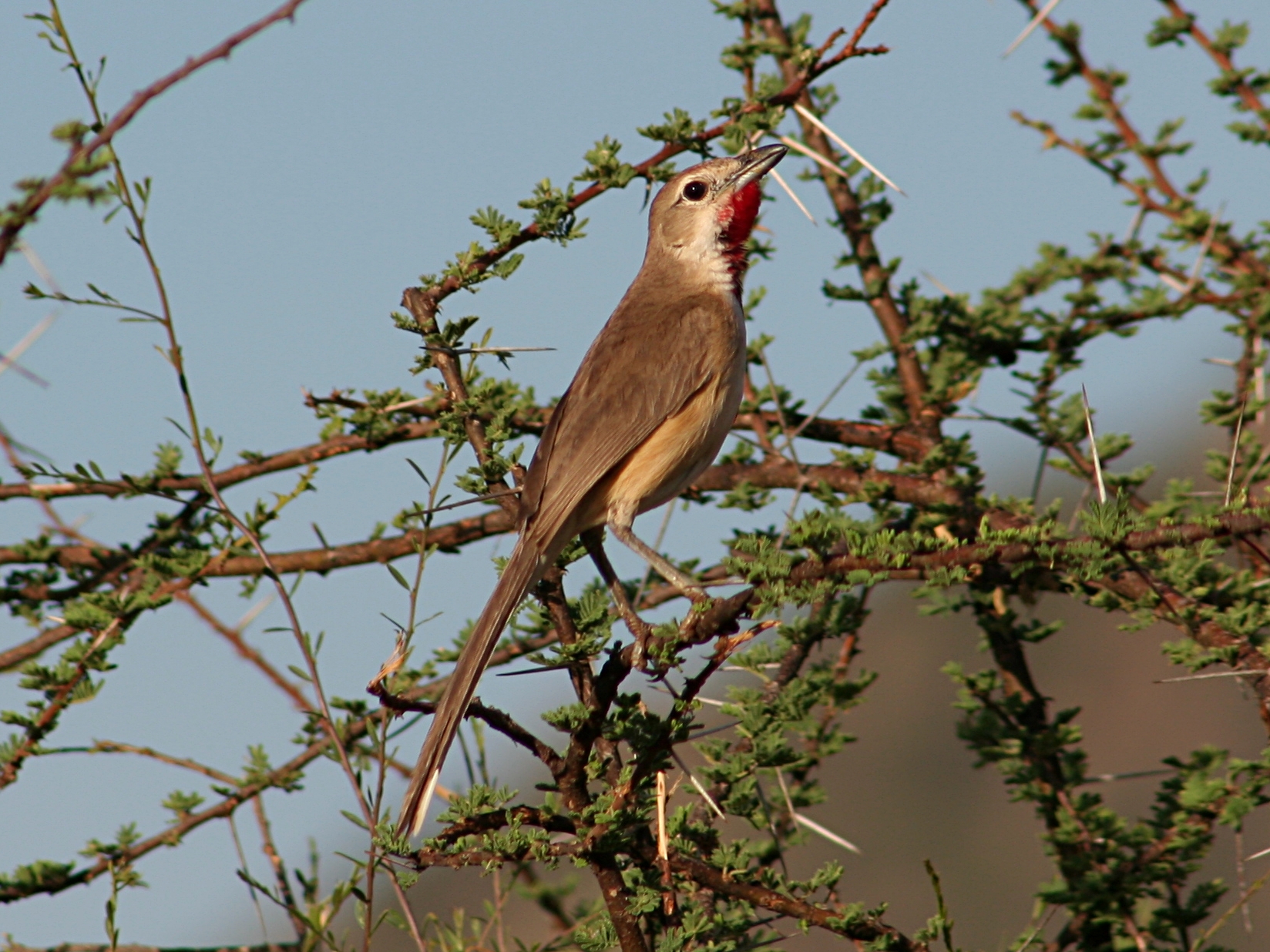As I’m sitting here on this 17th day of August, reminiscing about Kenya, I can’t help but write about bush-shrikes. Bush-shrikes are in the family Malaconotidae, and are endemic to sub-saharan Africa. They are part of a large radiation of African and Malagasy core corvoids, being closely related to the Vangas (Family: Vangidae) of Madagascar and the Helmet-shrikes (Family: Prionopidae) and Batises and Wattle-eyes (Family: Platysteiridae). As a group, this radiation is part of the core corvoids, and is sister to an Australian radiation of birds including the Wood Swallows (Family: Artamidae) and the Currowongs (Family: Cracticidae) (see tree below). The Core Corvoid radiation also includes more familiar families such as Laniidae (shrikes), Corvidae (jays and crows), Paradisaeidae (birds-of-paradise), Dicruridae (drongos), and Monarchidae (monarch flycatchers) (Jønsson & Fjeldså 2006; Barker et al. 2004; Fuchs et al. 2004)

 Anyway, now for some fun, random anecdotes about this awesome family… While in Kenya earlier this month, I was lucky enough to see eight species of these awesome birds: 2 species of Tchagra, 2 species of Boubou (Laniarius), two species of Malaconotus, in addition to Rosy-patched Bush-shrike (Rhodophoneus cruentus) and Brubru (Nilaus afer). I was able to study Sulphur-breasted Bush-shrike (Malaconotus sulfureopectus), Brown-crowned Tchagra (Tchagra australis), Slate-colored Boubou (Laniarius funebris), and Rosy-patched Bush-shrike for some time, and was astonished at how different they were from each other, especially in song diversity. This isn’t to say I didn’t see similarities between the species… morphologically they are relatively similar, but ecologically, there seems to be a broad range of differences. The Slate-colored Boubou would just walk all around camp, perch atop dead branches, scold passers by, and were very brazen in general. At the complete opposite end of that spectrum, the tchagras I watched were very secretive and skulky, scurrying along the ground, managing to sneak into holes in bushes and under tree roots that I didn’t think were even there.
Anyway, now for some fun, random anecdotes about this awesome family… While in Kenya earlier this month, I was lucky enough to see eight species of these awesome birds: 2 species of Tchagra, 2 species of Boubou (Laniarius), two species of Malaconotus, in addition to Rosy-patched Bush-shrike (Rhodophoneus cruentus) and Brubru (Nilaus afer). I was able to study Sulphur-breasted Bush-shrike (Malaconotus sulfureopectus), Brown-crowned Tchagra (Tchagra australis), Slate-colored Boubou (Laniarius funebris), and Rosy-patched Bush-shrike for some time, and was astonished at how different they were from each other, especially in song diversity. This isn’t to say I didn’t see similarities between the species… morphologically they are relatively similar, but ecologically, there seems to be a broad range of differences. The Slate-colored Boubou would just walk all around camp, perch atop dead branches, scold passers by, and were very brazen in general. At the complete opposite end of that spectrum, the tchagras I watched were very secretive and skulky, scurrying along the ground, managing to sneak into holes in bushes and under tree roots that I didn’t think were even there.In addition to that, there was a great diversity in the songs of the species. While both Sulphur-breasted Bush-shrike and the Rosy-patched Bush-shrike sang relatively similar, simple whistles, the Rosy-patched Bush-shrike would duet with its mate (sometimes while the two were in the same tree, but more often when its mate was far off). One could stand in the acacia scrubland, watching a Rhodophoneus singing, and in the distance, hear its mate responding. Aside from this, while these two species had relatively simple whistled vocalizations, the Slate-colored Boubous that were abundant around camp had a wide range of complex vocalizations. It actually took me quite a long time to realize that much of the bird song I was hearing around camp was all from the boubous.
Due to the relatively secretive nature of the Malaconotids I saw, I have but one decent picture to share with you of a bold Slate-colored Boubou that was literally foraging at my feet under our mess tent.
References:
Barker, F.K., A. Cibois, P. Schikler, J. Feinstein, and J. Cracraft. 2004. Phylogeny and diversification of the largest avian radiation. PNAS. vol 101:30: 11040-11045
Fuchs, J., R.C.K. Bowie, J. Fjeldså, and E. Pasquet. 2004. Phylogenetic relationships of the African bush-shrikes and helmet-shrikes (Passeriformes: Malaconotidae). Molecular Phylogenetics and Evolution. 33: 428-439
Jønsson, K.A., and J. Fjeldså. 2006. A phylogenetic supertree of oscine passerine birds. Zoologica Scripta 35: 149-186.



No comments:
Post a Comment